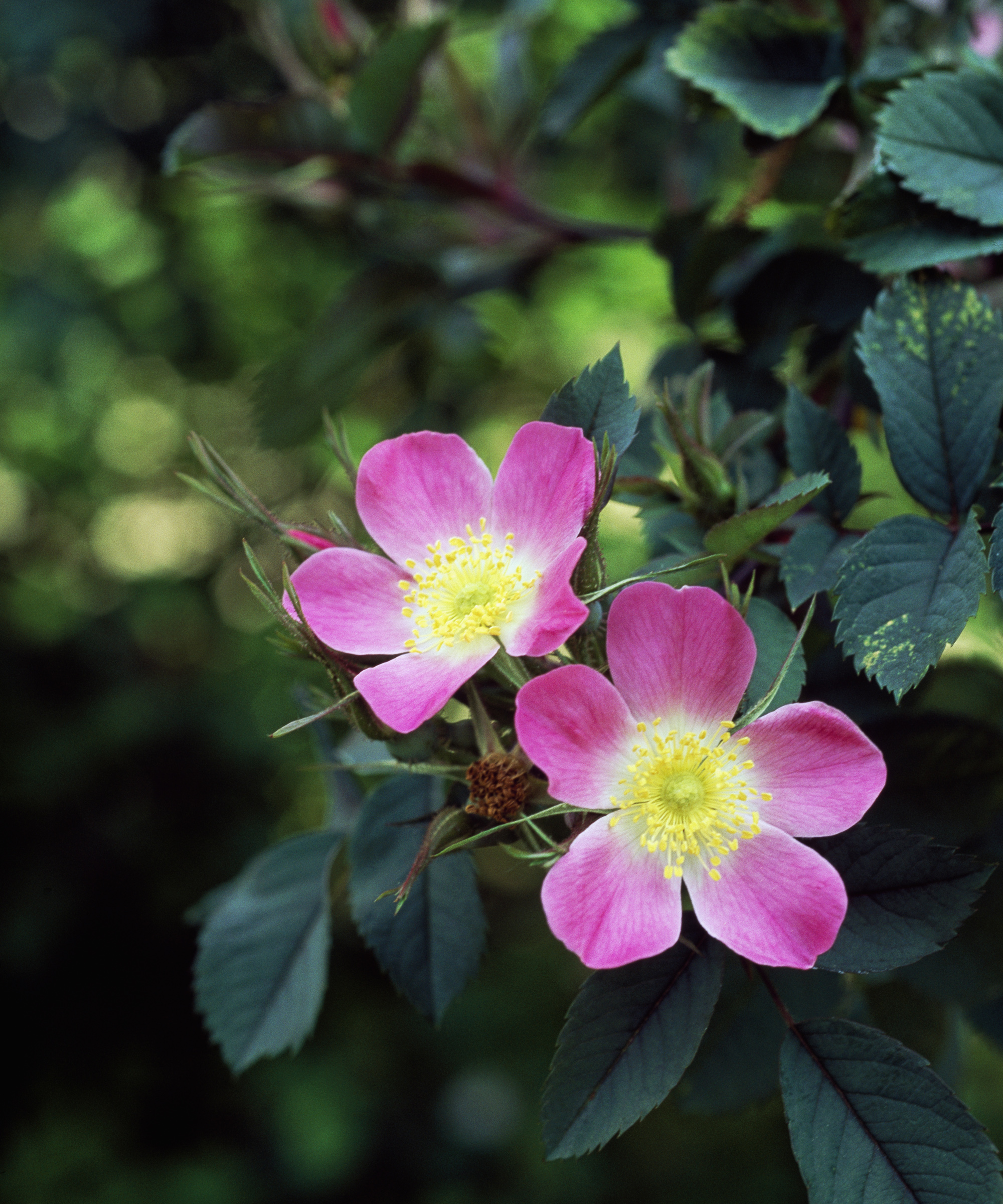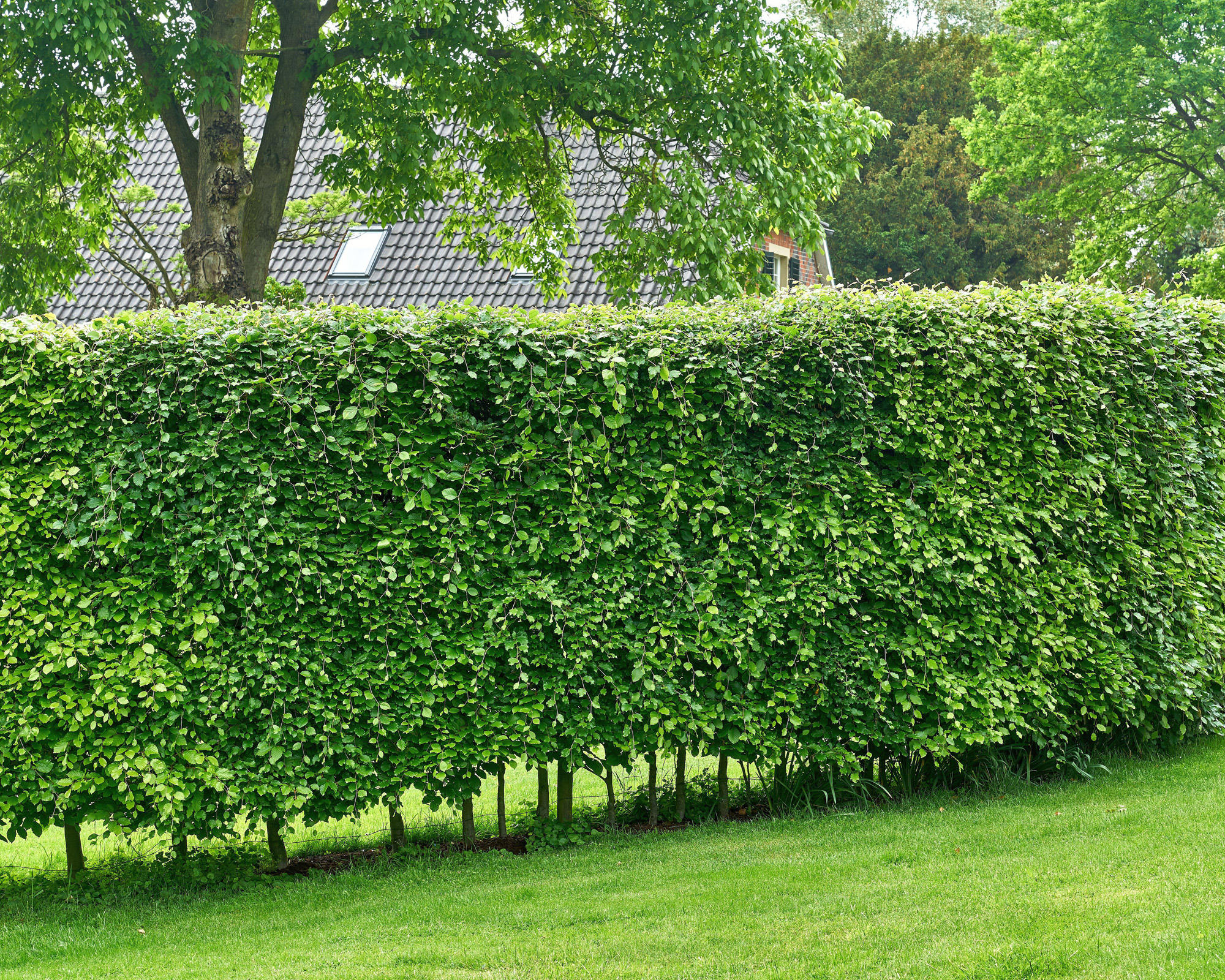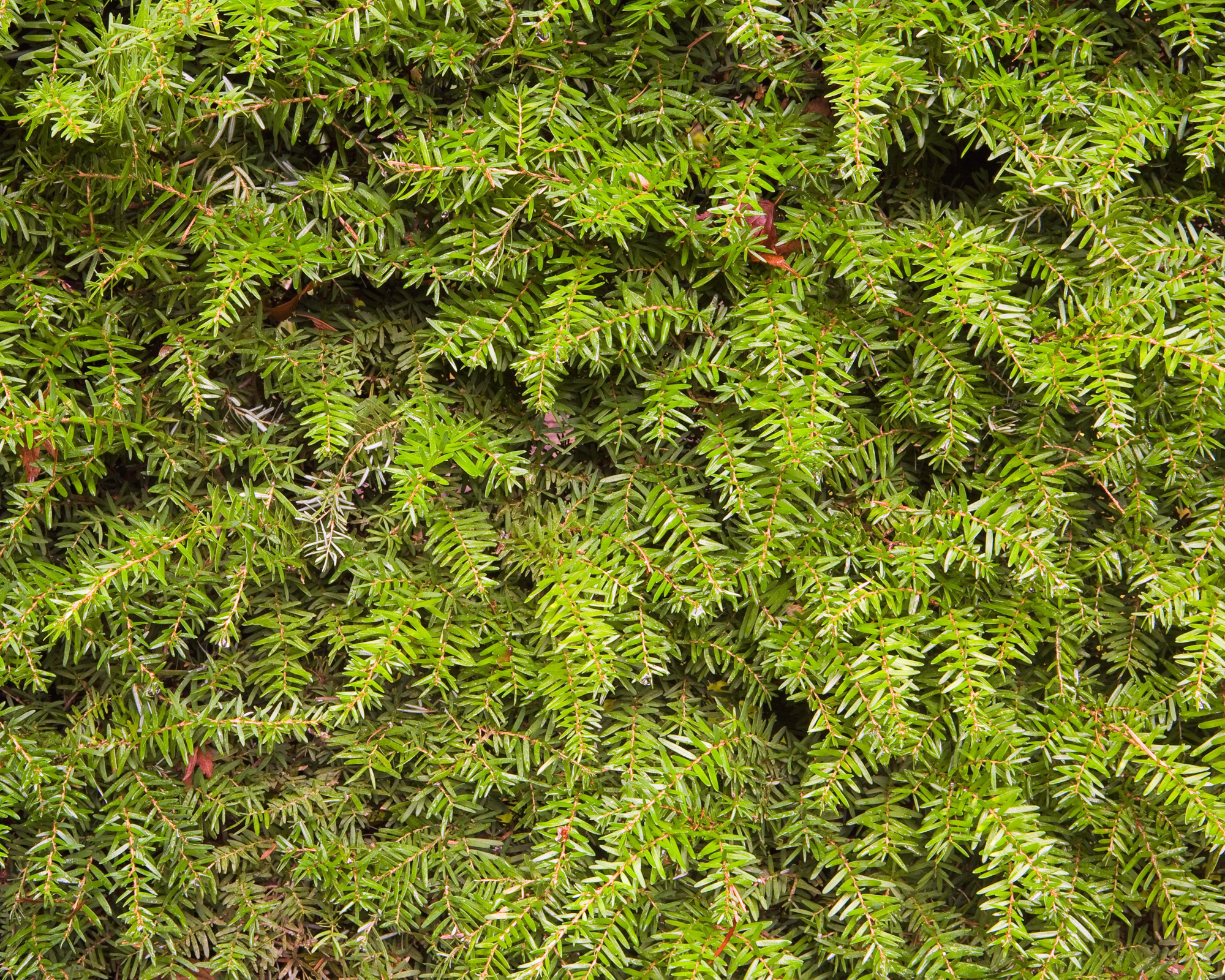Best hedging plants: 12 choices for creating green garden boundaries
The best hedging plants will create privacy, help to soundproof the garden and form a wind break in exposed areas


Choosing the best hedging plants for your garden is a key decision. Hedges can resemble green walls, carefully tended and evenly trimmed, or they can be deliberately untamed and informal, offering texture and color. They could provide much-needed privacy, shelter in an exposed spot, or act as sound-proof barrier near a busy road. Thorny or spiny hedges are a good deterrent against intruders, while other varieties offer a habitat for wildlife.
Before choosing a hedging plant, it’s a good idea to make a list of the functions you would like it to perform, and then find a plant which matches these needs.
There are a few pitfalls to watch for. Check to make sure that you are not planting a hedge that will grow too large for the space you have, or whose roots may disturb shared drainage or utilities. Hedges are a notorious cause of neighborhood disputes. If you have inherited a hedge that seems to be out of control, research when it might be the best to cut it back, as this varies from species to species.
Whether you're looking for an alternative to garden fence ideas or you simply want to green up your garden boundaries, there are plenty of hedging plants that will suit your needs and plot.
According to the RHS even new gardeners should not be put off planting a hedge. 'Hedge plants are cheap, easy to plant and form an attractive boundary more quickly than many gardeners imagine. As well as providing structure to the garden, they can be perfect for wildlife, and particularly nesting birds.'
Best hedging plants: 12 choices for your plot
If you want to give your garden boundaries a new look, choosing the best hedging plants is a great place to start. We've rounded up our favorites, whether you're looking for a fast grower, evergreen options or choices suitable for small and large gardens.
1. Laurel

There are many plants in the Laurel family, but one of the best for hedging is the cherry laurel. It is one of the best screening plants as it's an evergreen, with neat, glossy, rounded leaves that form a dense screen. This can help with noise reduction, and it performs as an effective wind break too.
It has been rated as the UK’s most popular landscape and garden shrub, partly due to the fact that it is so low maintenance and will grow in full sun or in shady areas. All it needs is a trim once a year, in late winter or early spring (twice a year if you prefer a more formal look).
It's also one of the best fast growing hedges, with a growth rate of around 12-24in (30–60cm) a year, and the final height is 16ft (5m), but it is easy to contain and can be trimmed back as hard as you like.
2. Thuja

Thuja plicata hedges
This evergreen conifer has fan-like sprays of thick, bushy leaves. It grows at a rate of 30in (75cm) a year, offering fast coverage, so it is ideal if you are in urgent need of some garden privacy.
There are lots of different varieties, but Thuja plicata is an excellent choice. It has foliage all year round, with green leaves in spring and coppery shades in the autumn. Keep it watered during spring and summer, and add a mulch in winter to lock in moisture.
These plants are native to East Canada and much of the north central and north eastern USA, and they are also perfect for the UK climate. Add a general purpose feed in the spring, and keep on top of pruning so the hedge doesn’t get out of control. Early autumn is the best time for this.
3. Bamboo

Fargesia murielae 'Fyra', also known as umbrella bamboo
If you're looking for one of the best hedging plants for a modern garden, then bamboo is a good option. The upright canes with their elegant, rustling foliage create the perfect informal boundary, and you can expect them to grow around 30in (75cm) in a year.
The downside of these lofty plants is that they can be invasive, and intrude into neighboring gardens. Choose a clump forming bamboo, such as phyllostachys viridiglaucescens or an umbrella variety such as fargesia murielae, which are less thuggish.
Plant in spring or summer into rich soil, and keep well-watered. If the bamboo gets too tall, it will stand a brutal chop back, and the old canes can be removed in the spring. They will reach up to 16ft (5m) tall, so they can create a highly effective screening barrier.
There's more expert tips on how to grow bamboo in our dedicated guide.
4. Phillyrea Angustifolia

Neat and tidy Phillyrea Angustifolia, also known as Jasmine box, is an evergreen shrub with dark narrow green leaves. The experts at Squires Garden Centres recommend it as one of their best hedging plants for ease and versatility.
It provides small clusters of fragrant cream flowers from late spring to early summer. It is a good alternative to classic box, but it will not suffer from box blight, a fungal disease which is now widespread in some areas of the UK and certain states in the USA.
Plant in full sun or partial sun in a moist well-drained soil. It is hardy and will tolerate severe winters. The ultimate height is 8-13ft (2.5-4m) and the spread 5-8ft (1.5-2.5m). Trim back in late winter or early spring.
There's more options for the best low maintenance shrubs in our dedicated guide.
5. Rosa glauca

If you're on the lookout for small garden ideas and need a hedging plant to suit, this pretty flowering hedge is a good choice. In small spaces, every plant has to work hard for its keep, and Rosa glauca offers pretty pink blooms in summer and red, cherry-like hips in the autumn. It makes a lovely informal barrier, with blue green foliage on reddish stems.
Suitable for most soil types, it’s a hardy plant, which will thrive in coastal areas, windy conditions and frost pockets in the UK and the USA.
Plant it as a bare root, between October and April in full sun or part shade. It will grow up to 10ft (3m) tall, but it can be pruned back after flowering. It has gained the RHS Order of Merit for being attractive and easy to grow.
6. Box

A box hedge works well in all size gardens, but it’s well suited to smaller spaces as it is compact with small leaves, slow growing and very easy to clip to size. It works as a low, formal hedge or as edging for garden borders.
It should be clipped twice a year, in early and late summer. The only downside is that it can be prone to a fungal disease called box blight. If the leaves develop brown spots, it is likely to be blight: there is little in the way of effective treatment and it usually has to be removed.
7. Hornbeam

This plant makes an elegant, even hedge, and it suits a long sweep of land and a more formal looking garden. Although it is deciduous, the foliage changes color but then stays on the branches over winter, so can be a suitable choice if you're looking for year-round garden screening ideas.
A moderately fast grower, hornbeam will increase in height by 8-16in (20-40cm) each year. It can also be pruned into shape, in late spring and again in early August. It's best to plant it in the autumn.
8. Western Hemlock

This is an evergreen conifer which creates a tall, dense hedge. Its size, up to a whopping 100ft (30m) tall, means that it’s best planted in very large gardens only. The branches have leaves that resemble needles, and green cones which turn brown in the autumn.
Keep it under control with a hard trim in early autumn. Native to north west America, this is one of the hardiest evergreen hedges and will cope with shady conditions and extreme weather conditions.
9. Photinia X Fraseri ‘Louise’

The experts at Squires recommend this best hedging plant for its interesting foliage. Although evergreen, the colors subtly change, turning from red to olive green with pink margins, then mature to dark grey-green with creamy-white edges. Cream spring flowers are followed by red fruits.
Plant it in sun or partial shade in moist well-drained soil. The ultimate height and spread is 13ft (4m).
10. Yew

This dense, bushy shade-loving evergreen is a classic option for garden divider ideas, as it can help to define different spaces in your plot. It has tiny needle-like green leaves and red berries in the autumn.
It lends itself to clipping neatly into shape, and this should be done in spring or summer. It will grow up to 50ft (15m) tall, so it needs to be closely monitored. Yew grows in cooler, northern parts of the USA.
The downside is that all parts of the plant are toxic, so it best avoided in spaces shared with young children and animals.
Wondering what other plants are toxic to pets? We've got the lowdown in our guides to the most poisonous plants for dogs and plants that are poisonous to cats.
11. Pyracantha ‘Mohave’

If you've been looking into privacy fence ideas but would prefer something a little more natural looking than a solid wooden fence, this evergreen shrub is ideal. It's good for adding privacy, security and sound-proofing to any plot. It has small, dense green leaves and spiky upright stems. Seasonal interest is provided with white flowers in early summer and clusters of vivid red berries after that.
For a wilder, more informal look, which will deter intruders, leave the hedge to grow undisturbed, or, if you prefer a neat boundary, cut it to shape in spring and late summer. It prefers moist, well-drained soil, and when it is established, it can put on up to 23in (60cm) of growth a year.
12. Privet

Only the harshest of winters will cause privet to lose its neat green leaves, so it’s a reliable choice for any hedge. It's also one of the best hedging plants for an urban garden as it will tolerate high pollution levels.
There are two species of privet: garden privet (Ligustrum ovafolium) and wild privet (Ligustrum vulgare). Wild privet is native to the UK, whereas garden privet originated in Japan. They are hard to tell apart, but wild privet is a better option for wildlife gardens.
Fast growing, dense, and easy to keep in shape, privet will thrive almost anywhere. However, it does need to be regularly watered during the first two years after planting. Bear in mind that the berries are toxic.
How do you plant a hedge?
Ready to plant your best hedging plants? Here's what you need to do.
- Thoroughly prepare the ground before planting a hedge. Weed it thoroughly, six weeks before planting, and then again just before you put in the plants.
- Dig some well-rotted compost into a trench, which should be wider and deeper than the roots of the hedge plant.
- Check the plant label for spacing advice, as hedging plants vary widely depending on the variety. Laurel needs wide spacing at about 60cm, whereas privet is best planted with four plants per meter, for example.
- Spread out the roots, and plant at the correct depth. As a guide, the point where the roots meet the stem of the hedge plant should be level with the soil.
- Backfill the hole using the soil you originally dug out, adding in some compost more compost or other organic if required.
- Water well after planting, particularly if the soil is very dry.

What's the cheapest way to plant a hedge?
The most economical way to plant a hedge is to buy bare root plants. These are available from online nurseries and garden centers between October and March. Container grown plants give a head start, but they will cost more. Bare root plants should be planted as soon as possible after purchase.

Should you water a hedge?
It is important to water a hedge regularly after planting it. The experts at Suttons suggest that when a bare root hedge has been planted: 'give it two to four liters per plant, depending on its size.' They add: 'Continue to soak your plants, roughly twice a week, applying water directly to the soil rather than the leaves.'
What time of year should you prune a hedge?
When and how much to prune a hedge depends on the variety you have planted. The team at Suttons advise: 'pruning is very much species-dependent, as certain species should be pruned immediately after planting, whereas others should be left until later in the year. There are also certain species which should not be pruned until they have reached their desired height.'
Whether you're doing a prune with your best garden shears or a bigger tidy up with the best hedge trimmer, it's always best to avoid disturbing hedges during birds’ nesting season, which typically runs throughout spring and summer.


An experienced freelance journalist, editor and columnist writing for national magazines and websites, Fiona now specialises in gardens. She enjoys finding and writing about all kinds, from the tiniest town plots to impressively designed ones in grand country houses.
